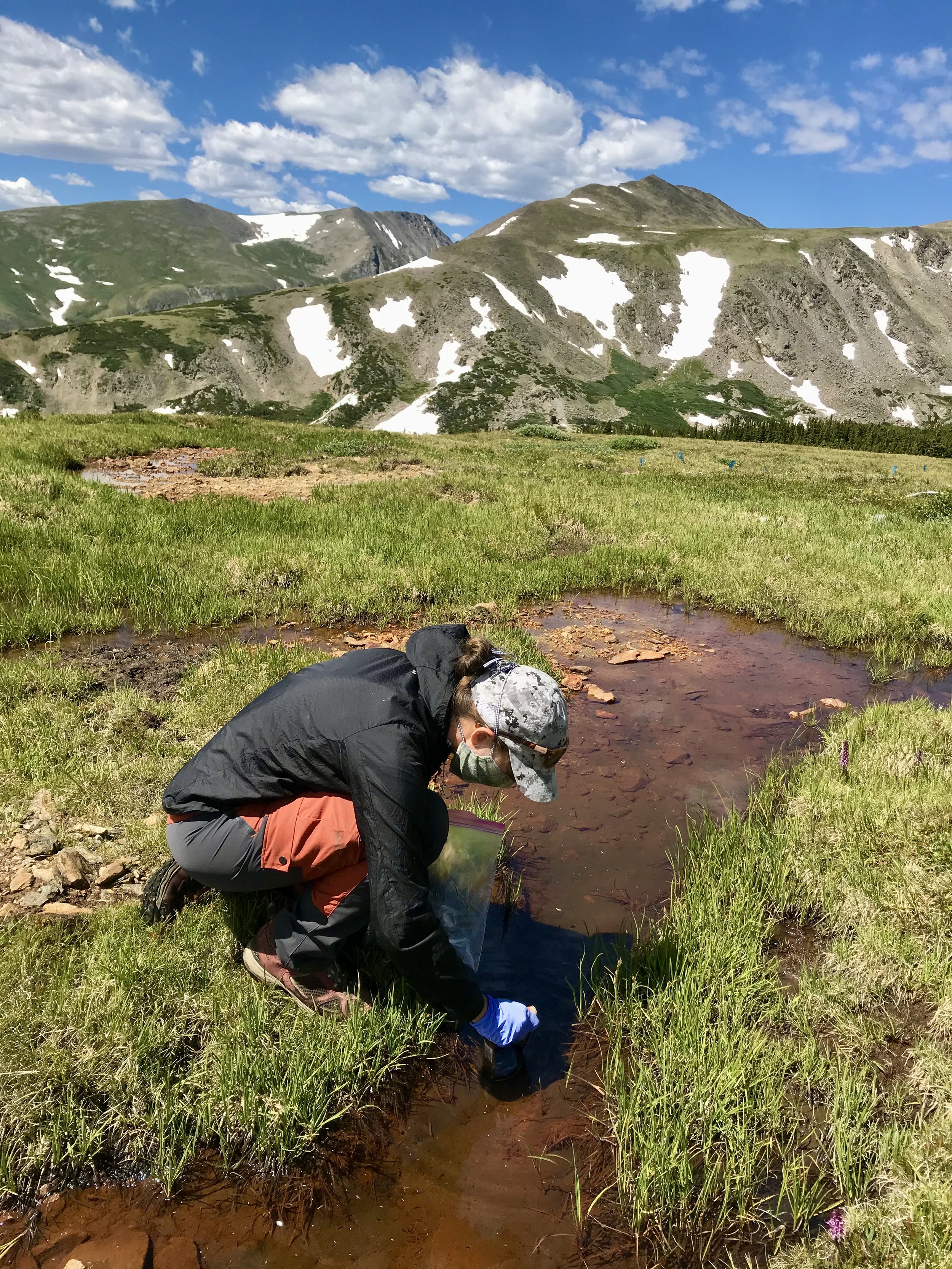
We explore new field and laboratory techniques in collaboration with a variety of colleagues.
Although we work across the periodic table, a focus of our research is pushing the frontier of how sulfur stable and radioisotopes can be used in process-based studies. We form strong collaborations with fellow scientists, farmers, state officials, and policy-makers that last for decades.

What we do
Major themes in our research
Biogeochemistry
We study how people are changing the fundamental element cycles that underlie all life on Earth. We seek to determine the consequences of these changes, and what to do about them, from local to global scales.
Sustainability
We collaborate closely with farmers, land managers, and policy-makers to optimize fertilizer, pesticide, and water management. Our goal is to inform ways to support peoples' livelihoods while minimizing environmental harm.
Critical Zone Science
The Critical Zone (CZ) is Earth's skin that extends from the groundwater to the tree canopy. From humans to beavers, we study how different factors affect CZ structure and function, and what those changes mean for soil and water quality.
Featured Projects
From Acid Rain to Agriculture: Our Changing Influence on the Sulfur Cycle
Our group seeks to understand transition in human manipulation of the sulfur cycle.
Declines in atmospheric sulfur deposition since the Clean Air Act and Amendments have reduced the threat of acid rain within the U.S. and other locations internationally. Without free sulfur in rainfall, and with the intensification of agricultural practices and climate induced pressures on pests, sulfur additions in agriculture are on the rise. We study this transition and its implications broadly, but also "dig in" to conduct process-based research and to determine the consequences of high sulfur inputs to crops.
Project collaborators:
Monica Cooper
UC Davis Cooperative Extension
Peter Weiss-Penzias
University of California, Santa Cruz
Todd Dawson
University of California, Berkeley
Charles T. Driscoll
Syracuse University
Major findings:
Our recent research on agricultural sulfur demonstrates that sulfur inputs are on the rise across the U.S. Midwest region, a major global exporter of maize and soybean. Increases in sulfur fertilizers are coincident with declines in atmospheric sulfur deposition as a result of air quality regulation, and their trends far outpace changes in nitrogen, phosphorus, and potassium use (see articles in Nature Geoscience and Nature Communications Earth and Environment). Former Ph.D. student, Dr. Anna Hermes successfully demonstrated that both sulfate and organic sulfur runoff from California vineyards has unique stable isotopic and molecular composition, suggesting that it can be traced through complex watersheds. This research appears in Environmental Research Letters and Environmental Science & Technology. Ph.D. student Laura Rea has developed sulfur radioisotope methods and found that vineyards and their drainages exhibit high rates of sulfate reduction.
The Fate of Mercury in Remote, High Elevation Ecosystems
Mercury cycling among air, land and water systems of remote, high elevation regions is poorly understood. In particular, there is little information about the potential for it to be transformed into its most toxic form, methylmercury, which biomagnifies and bioaccumulates in food webs.
Atmospheric mercury deposition has declined across the Eastern U.S., yet it is on the rise across western states, largely due to the global pool of circulating mercury. We study how mercury storage and cycling vary across high elevation environments, the potential for mercury methylation and mobilization into the ecosystem, and the influence of other elements (carbon and sulfur) and animal activity on mercury cycling. Our montane research occurs at sites across Colorado and California, while our alpine research is based at Niwot Ridge LTER (Colorado Rocky Mountains).
Project collaborators:
Charles T. Driscoll
Syracuse University
Sarah Janssen
U.S. Geological Survey
Katherine Lininger
University of Colorado, Boulder
Major findings:
Ph.D. Candidate Hannah Miller has found evidence that subalpine meadows export methylmercury downstream. Using mercury isotope spike experiments, she found that additions of sulfate stimulate higher rates of methylmercury production. This finding is particularly relevant, as alpine areas are increasingly exporting sulfate in streams, likely the result of climate-induced weathering and thawing of ice features. Indeed, our group has evidence that methylmercury is making its way into the tissues of animals in aquatic and mixed terrestrial-aquatic food webs in the alpine zone. Hannah’s research has important implications for how high elevation ecosystems are changing in a warming climate, as well as how downstream water resources may be impacted by mobilization of metals.
Watch this video to see Hannah Miller give a lightning talk about her research at the 2023 CIRES Rendezvous Celebration!
How Far Does Human Influence Go? The National Geographic Remote Regions Observatory Network
In 2018, The National Geographic Society approached Dr. Hinckley about piloting an observatory network in partnership with guide staff at their Unique Lodges of the World.
Dr. Hinckley and her long-time collaborator, Sheila Murphy (U.S. Geological Survey), chose three sites along the American Cordillera - British Columbia, Colorado, Ecuador, and Patagonia - to ask, "How far does human influence go?" In partnership with local guide staff, they measured the quantity and quality of precipitation in open canopy, old growth, and secondary growth forests of these remote areas. Their objective was to determine whether the marks of humanity on the landscape - development, agriculture, fossil fuel combustion - are evident in the nitrogen chemistry of rainwater in these remote places. Through this project, they measured some of the cleanest precipitation in the world (Patagonia), as well as the influence of biological material on rainfall (Ecuador). This is a unique project that relies on collaboration among scientists, local communities, and a non-profit agency.
Join our team!
We are looking for researchers committed to rigorous science, authenticity, and connection, who want to work on questions relevant to society at local to global scales.

















